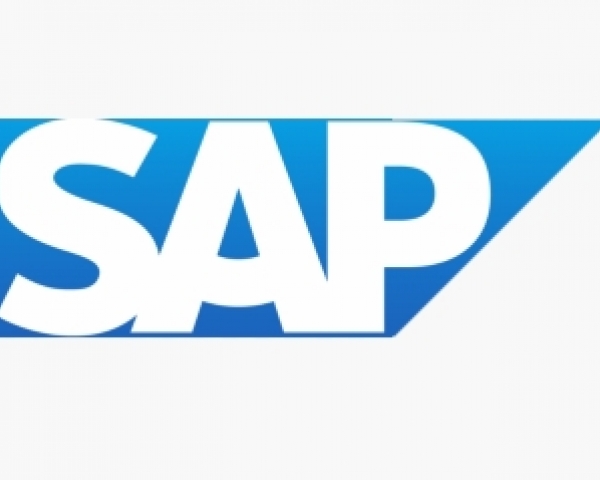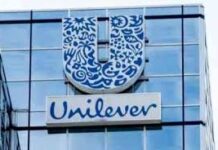. INTRODUCTION TO TECHNICAL MONITORING
Monitoring a system landscape is a complex task of significant importance for every company that operates one or more SAP systems. The complexity increases with every additional system, component, or extension.
The 7.1 release of SAP Solution Manager introduces Technical Operations for monitoring, administration, and analysis of SAP system performance. With the monitoring architecture of the Technical Monitoring SAP provides a flexible and universally-usable infrastructure with which you can monitor your entire IT landscape centrally, and which reports problems quickly and reliably. The architecture runs on every SAP Net Weaver Application Server and can be easily extended to include additional SAP and non-SAP components. The concept of the monitoring architecture is to make all required information available in a central monitoring system (CEN), and therefore to make the administrators’ work easier. Problems are displayed as soon as they occur; the log files can also be accessed from one location, which reduces the time required for error identification and correction. In this way, the monitoring architecture allows you to achieve greater efficiency with lower costs.
Additional configuration steps allow advanced technologies, such as notifications, and also reporting meaning that administrators no longer have to actively check the systems for alerts and also with the reporting facility Statistical records are generated.
The Technical Monitoring in Solution manager 7.1 comprises of the following use-cases:
# Unified Alert Inbox
- Central access point for all alerts coming from the different monitoring
- Integration of Incident & Notification Management, Root Cause Analysis and collaboration features
# System Monitoring
- Status overview for technical systems, instances, databases and hosts
- Drill down to single metrics and events, Jump in to metric reporting and landscape information
# End User Experience Monitoring
- Measurement of availability and response times from an end user perspective
- Deep integration in E2E Trace Analysis for Root Cause Analysis
# Process Integration Monitoring
- Central entry point for SAP Process Integration specific monitoring for complete PI domains
- Contains central monitors for PI components, PI channels and Message flows
# Business Intelligence Monitoring
- Central monitoring for SAP Business Intelligence solutions based on SAP BW and BOE XI
- Monitoring of SAP Business Warehouse process chains and Business Objects specific jobs
# Connection Monitoring
- Active Monitoring of RFC and HTTP connections between SAP Systems
- CCMS v/s Technical Operations
There are major changes/enhancements between CCMS and Technical Operations in Solution Manager 7.1. Technical Operations can replace whatever monitoring procedure you currently have.
Technical Operations will replace the CCMS infrastructure even though CCMS is still supported in 7.1. Technical Operations is only available in 7.1. And the work you completed around CCMS will be preserved in an upgrade. You will need to eventually migrate monitoring from CCMS to Tech Operations. CCMS is still there but you will need to migrate over. Tech Operations require more effort to configure on the Solution Manager side. All DIAGNOSTIC AGENT agents need to be upgraded to 7.30 to make the process easier.
Solution Manager 7.1 CCMS is the same as SM 7.01 CCMS. If you are referring to Technical Operations – it has a ton of new functionality as opposed to CCMS. And yes, Technical Operations is the foundation for many other Solution Manager components. Technical Operations is also required for other Solution Manager 7.1 features like Downtime Planning, Service Level Reporting, and Data Volume Management etc.
With CCMS – SAP provided us with the ability to send CCMS data to SNMP. With Technical Operations, we get an additional tab in the setup next to auto incidents, auto notifications, that says “Third Party Components”.
You get the same email functionality, as in with CCMS and more. We can now edit the content within the email and provide direct links to the work centres, Wily Web View, etc. You can edit the subject line as well – but have not found a way to use variables in the subject line
- Configuration Issues
It is always better to deploy DIAGNOSTIC AGENT 7.30 since installs DIAGNOSTIC AGENT, automatically deploys/ updates SAP Host Agent, at the same time and supports NW 6.40 and above. For Technical Operations with DIAGNOSTIC AGENT 7.20, you just need the latest patch level. Though, some RCA features might not work and EWA Reports for JAVA system might also be affected, until Diagnostic Agent is upgraded to 7.30, the monitoring was fine. That is the reason, why you must install Wily Enterprise Manager on Solution Manager and the agents on the managed systems. Solution Manager uses the data collected by Wily to create the JAVA Early Watch Reports. Also note – you need to deploy Diagnostic Agents 7.30 to the JAVA system as well.
In case, you have Diagnostic Agent 7.2, there is one more way, but a circuitous one – Use the DIAGNOSTIC AGENT 7.30 media to uninstall DIAGNOSTIC AGENT 7.20 and then install DIAGNOSTIC AGENT 7.30 which also upgrades your SAP Host Agent.
To add more, no downtime is required to upgrade agents and deploy new SAP Host Agent.
- Steps
- Get the JAVA system into an SLD which feeds into the LMDB. This is the absolute first step. Get that system into an SLD which has a bridge to the Solution Manager SLD/LMDB. Never add a net weaver system manually to SMSY – it should always ready from SLD/LMDB
- Deploy the DIAGNOSTIC AGENT 7.30 agent (or upgrade whatever is present) and register the agent during install to the Solution Manager SLD/LMDB
- When it’s in SMSY correctly – assign the product system and run Managed System Configuration via SOLMAN_SETUP on that system
- Next run the Technical Monitoring wizard in SOLMAN_SETUP
- Modify and apply monitor templates.
- Effort Estimation.
In terms of effort, once you upgrade you’ll need to complete System Preparation and Basic Configuration as part of SOLMAN_SETUP which will take about 40 hours (depending on how fast you work). And make sure every traffic light is green – no exceptions!
After you’ve completed System Preparation and Basic Configuration you’ll move into Managed System Configuration which is estimated at 4-6 hours per managed. Then Technical Monitoring is another SOLMAN_SETUP wizard where you’ll spend between 60-80 hours creating monitoring templates, applying monitoring to servers, defining alert types, etc.
So in summary…
- 40-60 hours to upgrade
- 40 hours for SOLMAN_SETUP
- 20 Servers = 80 hours for Managed System Configuration
- 60-80 hours to develop and fine tune Monitoring Templates
- A use-case out of many- Unified Alert Inbox
Technical Monitoring, in Solution Manager 7.1 offers a new window where from you can monitor the data regarding availability, performance, configuration,and exception of the selected system.
Here by clicking on the alert, we can directly navigate to Unified alert Inbox and would display all the alerts related to the selected system.
In the unified alert inbox there are various options that we can do selecting a particular alert or a number of alerts :-
- Confirm
- Change configuration
- Show Action log
- Postpone
- Navigate
- Problem analysis
Also from alerts, alert group are formed for which we can-
- export the details in spreadsheet
- create notification, incidents and also analysis report
Technical Monitoring offers more user friendly interfaces, like one for postponing a known alert from the alert inbox.
There are various Navigation options from the alerts:
- Monitoring – Shows more details of that particular alert by taking to the Graphical display screen of technical monitoring
- System login –remote login possible to the system for which the alerts are generated
- Technical System Editor –Takes to the SLD screen of the corresponding system
- Landscape browser-navigates to the LMDB screen for landscape management
- From the Initial Alert Inbox screen we can also start the Introscope Manager
- Beauty of Technical Monitoring
The best part of Technical Monitoring is that it presents a graphical view of the following 4 managed object:-
- Technical System
- Technical Instance
- Database
- Host
Under 4 different view categories:-
- Availability
- Performance
- Configuration
- Exception
The metric viewer opens the statistical graphical detail:-
- Benefits
- Provide status overview regarding technical system including instances, databases and hosts.
- Allow to access landscape information and problem context for technical system.
- Drill down from status information to single metrics and events provided by End-to-End monitoring and alerting.
- Visualize metrics and events including thresholds and current rating / value.
- Jump-in capability in metric viewer including zoom functionality in detail information.
Regards,
Team FuGenTimes
[Reference- FuGenEd Pvt. Ltd. (https://www.linkedin.com/in/fugened-sap-059220246)]

































